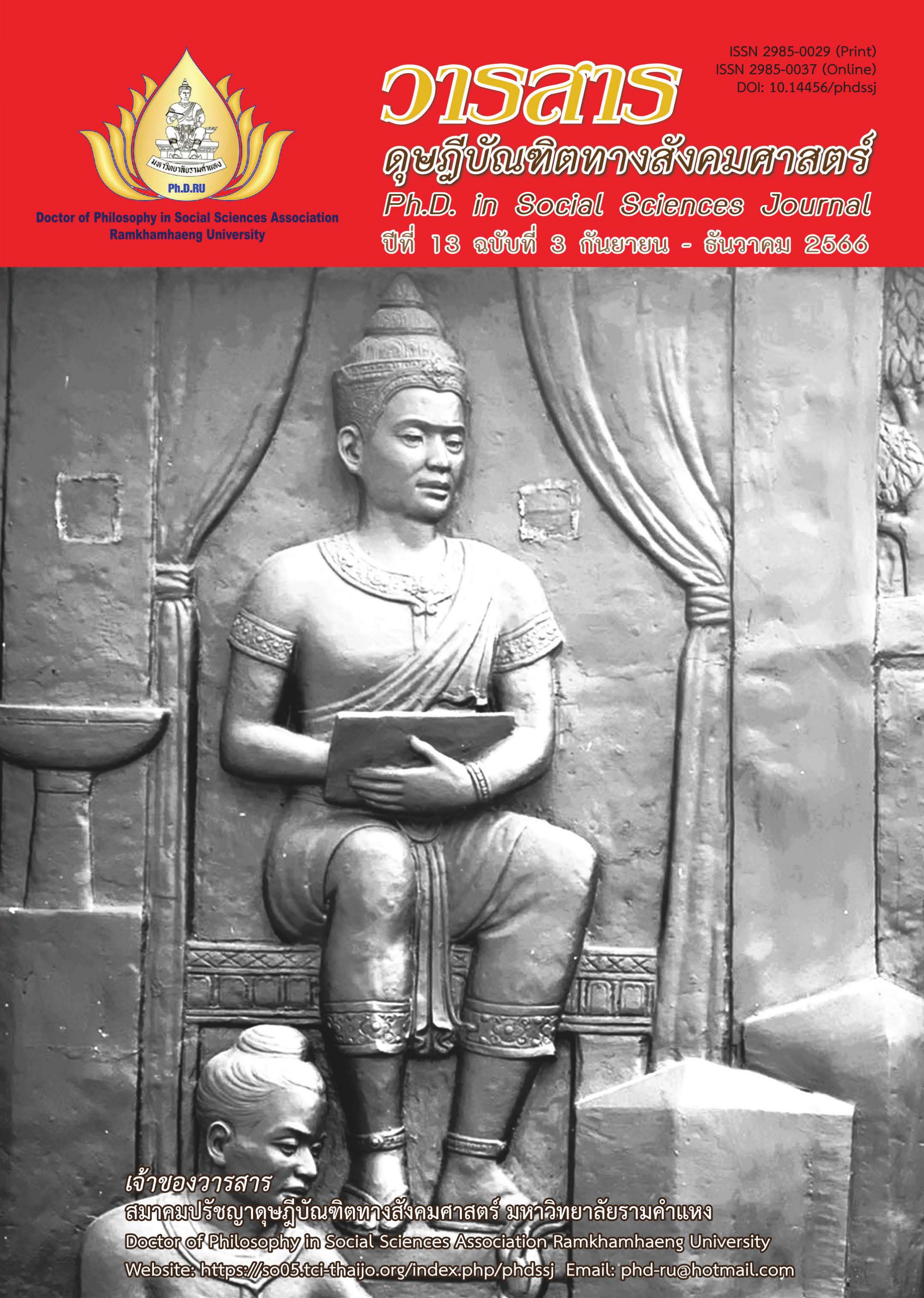Competency Development Among University Personnel
Main Article Content
Abstract
This academic article aims to analyze the development of digital competency of university personnel and the interconnectedness of both internal and external causal factors, using the concept of digital competency, the theory of innovation diffusion, internal personal factors, and external factors as frameworks for analysis.
Findings are as follow: The causal factors contributing to the development of digital competency among university personnel include internal personal factors such as (1) acceptance of change, (2) motivation for performance excellence, (3) openness to experiences, (4) perseverance, and (5) a passion for seeking knowledge, as well as external factors such as (1) organizational culture, (2) social support within the organization, and (3) communication within and outside the organization. These factors are instrumental in the process of developing digital competency, in line with the characteristics of developing digital competency among university personnel, which can be divided into two parts. The first part, which is visible and directly measurable, includes the knowledge and skills of personnel that can be developed through studying and research to acquire knowledge and through practical training to develop skills. The second part, which is more difficult to observe, includes attitudes, values, self-perception, personal characteristics, and motivation.
Article Details

This work is licensed under a Creative Commons Attribution-NonCommercial-NoDerivatives 4.0 International License.
Academic articles, research articles, and book reviews in the Ph.D. in Social Sciences Journal are author’s opinions, and not the publisher’s, and is not the responsibility of the Ph.D. in Social Sciences Journal Philosophy Association, Ramkhamhaeng University. (In the case that research is done on human, the researcher has to be trained in Ethics for Doing Research on Human Training and has to produce the evidence of the training).
References
Ala-Mutka, K., Punie, Y., & Redecker, C. (2008). Digital competence for lifelong learning. Office for Official Publications of the European Communities.
Aviram, A., & Eshet-Alkalai, Y. (2006). Towards a theory of digital literacy: Three scenarios for the next steps. Retrieved from https://old.eurodl.org/?p=archives&year=2006&halfyear=1&article=223
Carretero, S., Vuorikari, R., & Punie, Y. (2017). The digital competence framework for citizens: With eight proficiency levels and examples of use. Publications Office of the European Union.
Cook, R., & Lafferty, L. J. (1989). Organization culture inventory. Human Synergistics International.
Costa, P. T., Jr., & McCrae, R. R. (2008). The revised NEO Personality Inventory (NEO-PI-R). In G. J. Boyle, G. Matthews, & D. H. Saklofske (Eds.), The Sage handbook of personality theory and assessment, vol. 2: Personality measurement and testing (pp. 179-198). Sage.
Ginevicius, R., & Vaitkunaite, V. (2006). Analysis of organizational culture dimensions impacting performance. Journal of Business Economics and Management, 7(4), 201-211.
Gray, B. (1989). Collaborating: Finding common ground for multiparty problems. Jossy-Bass.
Ha, R., Wae-u-seng, N., & Hengpiya, A. (2019). Situational factors that affecting active learning behavior of Islamic studies’ student program in higher education of three southern border provinces of Thailand. Journal of Yala Rajabhat University, 14(1), 96-107. [In Thai]
Katzenbach, J. R., & Smith, D. K. (1999). The wisdom of teams: Creating the high-performance organization. Harper Collins.
Mandler, G., & Sarason, S. B. (1952). A study of anxiety and learning. The Journal of Abnormal and Social Psychology, 47(2), 166-173.
McClelland, D. C. (1973). Testing for competence rather than for intelligence. American Psychologist, 28(1), 1–14.
McClelland, D. C. (1975). A competency model for human resource management specialists to be used in the delivery of the human resource management cycle. McBer.
McClelland, D. C. (1985). Human motivation. Scott, Foresman.
Meechart, W. (2005). Public administration and organizational behavior. Chulalongkorn University Press. [In Thai]
Ministry of Education. (2009). Guidelines for developing characteristic assessment and evaluation in basic education curriculum according to the central axis of national education. Author. [In Thai]
Office of the Civil Service Commission (2020). Digital skills for civil servants and public sector personnel for digital transformation of the government. (W6/2561). Retrieved from https://www.ocsc.go.th/digital_skills2 [In Thai]
Orser, B., Riding, A., & Li, Y. (2019). Technology adoption and gender-inclusive entrepreneurship education and training. International Journal of Gender and Entrepreneurship, 11(3), 273-298.
Rogers, E. M. (1995). Diffusion of innovations (4th ed.). The Free Press.
Robbins, S. P. (2001). Organizational behavior (9th ed.). Prentice Hall.
Sanguanwongwan, W. (2004). Management and organizational behavior (2nd ed.). Pearson Education Indochina. [In Thai]
Straus, D. (2002). How to make collaboration work: Powerful ways to build consensus solve problems, and make decisions. Berrett-Koehler.
Wonglas, P., Meekun, K., & Rasanond, T. (2022). Research and behavior development approach to exploration and exploitation: Enhancing the vocational teachers’ profession and life quality. Journal of Administration and Social Science Review, 5(5), 169-182. [In Thai]


